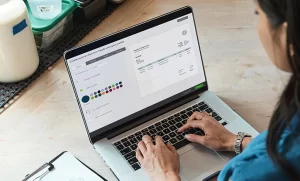Setup QuickBooks for real estate [full guide]
Call us for instant help – We are available 24*7

“Being a property management firm, we have special and unique accounting needs. I had heard about QuickBooks is a very affordable yet widely featured accounting software. But our main concern was, Will QuickBooks for real estate work as good as it does for any other firm? After successfully using QuickBooks for my property management firm for over two years, I think it’s safe to say, QuickBooks does have what it takes to manage real estate accounting. It lets you set up vendors, customers, etc. Also, manage the expenses and profits well.”
QuickBooks is an amazing accounting tool used by small to mid-size businesses. A hybrid of QuickBooks with real estate is a great idea and even better when actually brought to life. In this article, we’ll discuss everything you need to know about QuickBooks for real estate.
QuickBooks For Real Estate: Landlord’s Point Of View
“My bookkeeper was never able to show me income via different properties. No matter what we did, profits and incomes got mixed. But since I’ve purchased QuickBooks for real estate, the job’s been much easier. I can not only set up different accounts like customers and properties but also manage them separately and see all my profits.”
 QuickBooks for landlords has by far proved to be a great choice. It offers setting up businesses and customers’ files as different accounts. You can easily collect rent and manage customers on one hand. On the other hand, you can make payments to different businesses without any hassle.
QuickBooks for landlords has by far proved to be a great choice. It offers setting up businesses and customers’ files as different accounts. You can easily collect rent and manage customers on one hand. On the other hand, you can make payments to different businesses without any hassle.
However, you’ll have to make changes and adjustments as per your requirements because there is not a specific QuickBooks property management version. Nonetheless, you can establish two company files, one for income and another for payments. These can be:
- Property management company: This specific company file will be dedicated towards the income that you will receive by handling the properties.
- Rental property company: This company file is created to tackle all the bills and rent collection. It will also be used to manage the property belonging to the owner.
Read More - How to Share Company File Remotely?
Why Two Different Company Files for QuickBooks for Real Estate?
The thing is, using QuickBooks property management software can be complicated with one company file. A real estate business has a whole lot of accounts and even more transactions to keep track of. However, using two company files leverages you to keep different transactions separated. You can perform all activities like setting up customers, properties, rent collection, tenants, and record expenses of different properties.
Steps To Set Up QuickBooks For Real Estate
Setting up QuickBooks real estate for use is relatively simple. The thing is, there is no specifically designed QuickBooks property management software. You’ll have to make tweaks in the usual software. All you have to do is set up:
- Properties as class
- In each unit a customer
- Tenants as job
- Rent as item
- Payees as vendor
- The input of services of property as inventory
Once you make the above adjustments, you are all set to start QuickBooks property management. Carefully follow every step, without missing anything. You’ll not even realize any difference.
Step 1: Arrange Each Unit/Property As a Customer
Setting up each unit or property you manage as a customer helps you to set the expenses of these units or properties as billable. You can further bill these to the owner of the property. Once you have done this, pulling out a profit and loss report becomes quite easy. You can even set the filter as per properties or units on a monthly, year-to-year, weekly, or seasonal as needed.
Step 2: Different Locations of Different Properties Under Location
When you create the company file, use location to set different sites. This will help in case the property owners have more than one property. The reports can be set by location and units. Follow these sets to set up tracking via location:
- Open Settings by clicking on the gear icon.
- Navigate the account settings.
- Now, click on advanced.
- Select the label for your locations.
Step 3: Set Up Class To Depict Services
You’ve already set up the customer as property. Now the services that any property is attached to can be set up under the class section while setting up QuickBooks for real estate. Property management is complicated and can only be sorted out if this classification is performed properly. When you classify classes as services, you can easily figure out :
- Which service is generating the most income by looking at the profit and loss report.
- You can figure out the different costs of goods sold for each service.
- Find the cost of each property by looking at and analyzing the margins of each property or service.
Step 4: Code The Income And Expense Account With Categories
In order to classify separate expenses and services, you can utilize the category option. Set up categories with different account names to monitor each one. Follow these steps:
- Click on the gear icon to open settings.
- Now tap on options.
- Select your company.
- Navigate to Chart of Accounts and hit new.
- Add different categories as per the data.
Step 5: Enter Income And Expenses
There are two ways to register income and expenses. You can either enter them manually, which will be time-consuming and confusing. The second option is to sync a cloud accounting app. But there is also a third way, where you can join both the first and second options. Here’s how:
- Allot the class to the service it offers.
- Set it up as billable if it is an expense of the property or unit you manage.
- After this, choose the right property from the list.
Step 6: Split Function For Multiple Services By One Vendor
When you are adding expenses, you can use a split function for any vendor offering multiple services.

- Go to the banking menu.
- Navigate to transactions.
- Hit the edit button, or the pencil icon to edit the transaction.
- Use the split button to make changes.
Read More - How to Merge Vendors in QuickBooks?
Step 7: Carry Out Reports
After you’ve completed all the above steps successfully, QuickBooks property management is all set. Now you can run reports like balance sheets and profit and loss statements as per customer, location, class, etc. These reports will be very helpful in providing the details appropriately to the property owners and for yourself too.
Steps To Record Transaction In QuickBooks For Real Estate
As already mentioned, QuickBooks is not actually the type of software designed for property management. However, it can be used for the same. The instruction to record a transaction in QuickBooks property management software is stated on the official website as well.
Make Rental Property Company File And Property Management Company File
- Tenants and vendors: Allot customers to properties and tenants. Set owners as vendors.
- Accounts and items: Accounts should be set as asset accounts and security deposits as liability accounts. Classify rent collection and common expenses under the income account. Property bills and management expenses are under the expense account.
Conclusion
While working with QuickBooks for real estate, you will figure out that QuickBooks as a property management accounting software has some manageable flaws. But, with the above guide, setting up the application and making all necessary changes will become much easier and all sorted. If you still need any help, don’t hesitate to contact the QuickBooks support team. We’ll help you resolve any query or issue you might be facing. We guarantee satisfactory results. Finally, we end the article hoping you were able to set up your QuickBooks property management software.
Frequently Asked Questions
You can definitely use QuickBooks to handle rental properties by making some tweaks and changes. However, to be honest, the app was not originally designed for property management purposes, but it still gives huge leverage if used for the same.
Yes, you can collect rent using QuickBooks for real estate. All you have to do is, create an Income Account where all rent collection will go or you will enter.
The thing is, there are no QuickBooks specifically designed for rental purposes. QuickBooks is accounting software, and it can still be used for rental purposes. You may find it a little complicated to set up the application, but, it is completely safe to conclude that QuickBooks can be used for rental purposes though it was not created for the same.

![Quickbooks Error 12007 [Fixed]](https://quickbookstoolhub.com/wp-content/smush-webp/2020/11/12007-300x169.jpg.webp)




